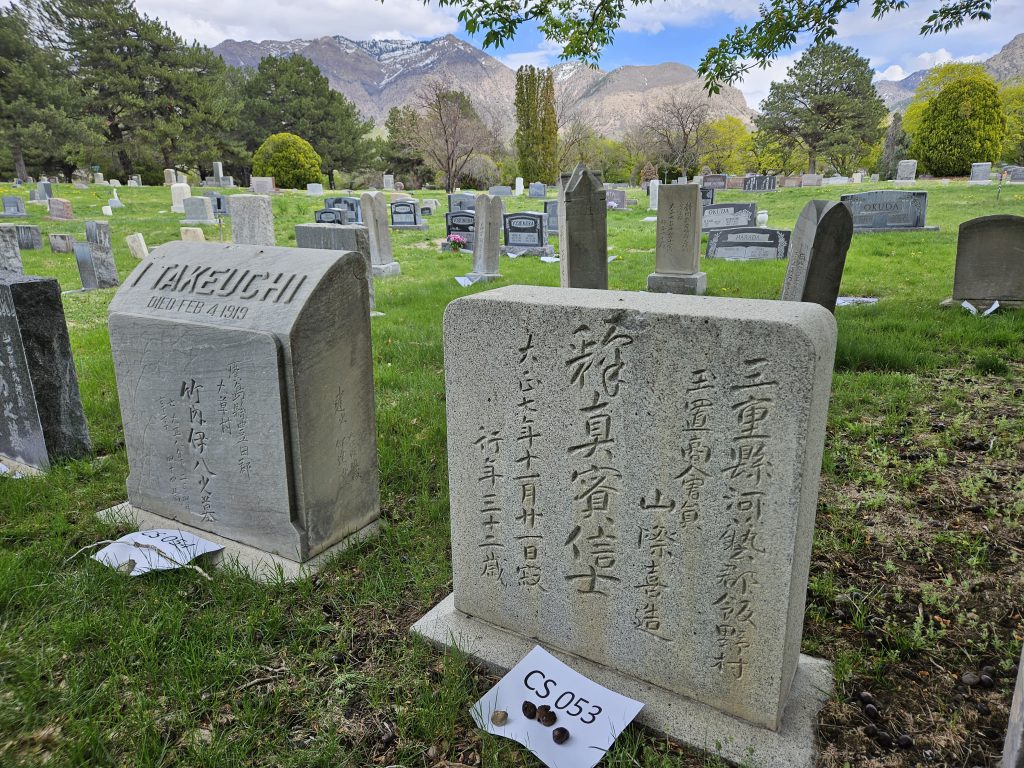By Renée Leta and Ellen Weist
For the past decade, Amy Barry has overseen the state’s Cemeteries Program, now part of the Utah State Historic Preservation Office.
She maintains the Cemeteries and Burials database, offers preservation workshops, and maintains an alphabetical list and map of all the cemeteries and burial sites throughout the state. She also oversees the state’s annual cemetery preservation grant program.
Utah is the only state which, since 1997, has mandated that burial records be maintained in a searchable database. As Barry puts it, her job will “never be done.”
Barry earned a master’s degree in political science and public administration from the University of Utah. She has chaired Salt Lake City’s Parks, Natural Lands, Trails and Urban Forestry advisory board, and was a founder of the Sugar House Farmers Market
In an interview, Barry explains the guiding philosophy that anchors the Cemeteries Program. Cemetery grant applications are open from Feb. 1 to May 31 annually, and eligible projects include records digitization, GIS mapping, surveying and preservation. Information available here.



Why is it essential to maintain cemeteries?
Amy Barry: We value cemeteries as final resting places where we can preserve and collect our histories. Their maintenance is a reflection of our care for those personal stories with dignity and remembrance and the history that goes with it.
Tell me about your research about specific Utah headstones. Any favorites?
I have so many favorites it feels impossible to pick. I generally like the ones that tell the stories of less-than-famous or little-remembered [people].
What’s the difference between public, private, and other types of cemeteries in terms of maintenance?
Simply ownership. Private cemeteries are mostly owned by larger corporations.
Why did the state mandate the collection of burial information from cemeteries?
Utah values its history and genealogy and we want to ensure that accurate information is maintained and available.
What are the benefits of record-keeping for cemetery owners/managers? What are the benefits for the public?
Per state law, cemeteries must keep records of their burials. Cemeteries must know who is buried where — to the degree their historical records can tell them — but it is imperative that they know which graves are occupied to avoid problems with future burials. The state tracks remains to their final disposition and burials are part of that tracking system. Beyond that, generations come looking for their ancestors and they want to know where their loved ones or ancestors are buried to pay their respects.
How does digitizing the records in a cemetery work?
Cemeteries that digitize their records are helping to preserve that data as paper is not a long-term solution. Cemeteries often will hire an engineering firm or do it in-house if they have the capacity to survey their cemetery and plots. Each plot needs to be identified by location as it is mapped. Those spaces are then tied to the burial information for better integration of the on-the-ground conditions and the record book.
Last fiscal year, the Cemetery Grants program awarded 11 grants for a total of $56,850 in grant funding. What would additional funding mean?
The additional funding for the grant would help with the ability to fund applications to digitize records, conduct surveys, and produce GIS maps. Currently, demand far outstrips our ability to fund the applications.
What communities have benefited from the state’s Cemetery Grants?
Grant recipients within the last three fiscal years:
Lake Point
Cannonville
Parowan
Provo
St. George
Deweyville
Helper
Milford
Myton
Rockville
Scipio
Taylorsville
Cleveland
Escalante
Eureka
Fairview
Fayette
Leeds
Lyman
Moroni
Springville
Circleville
Grover
Oak City
Learn more about the Utah Cemeteries and Burials program, or search the state’s Cemeteries database here.

